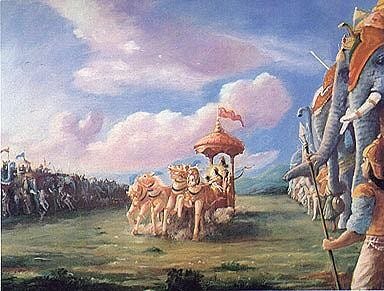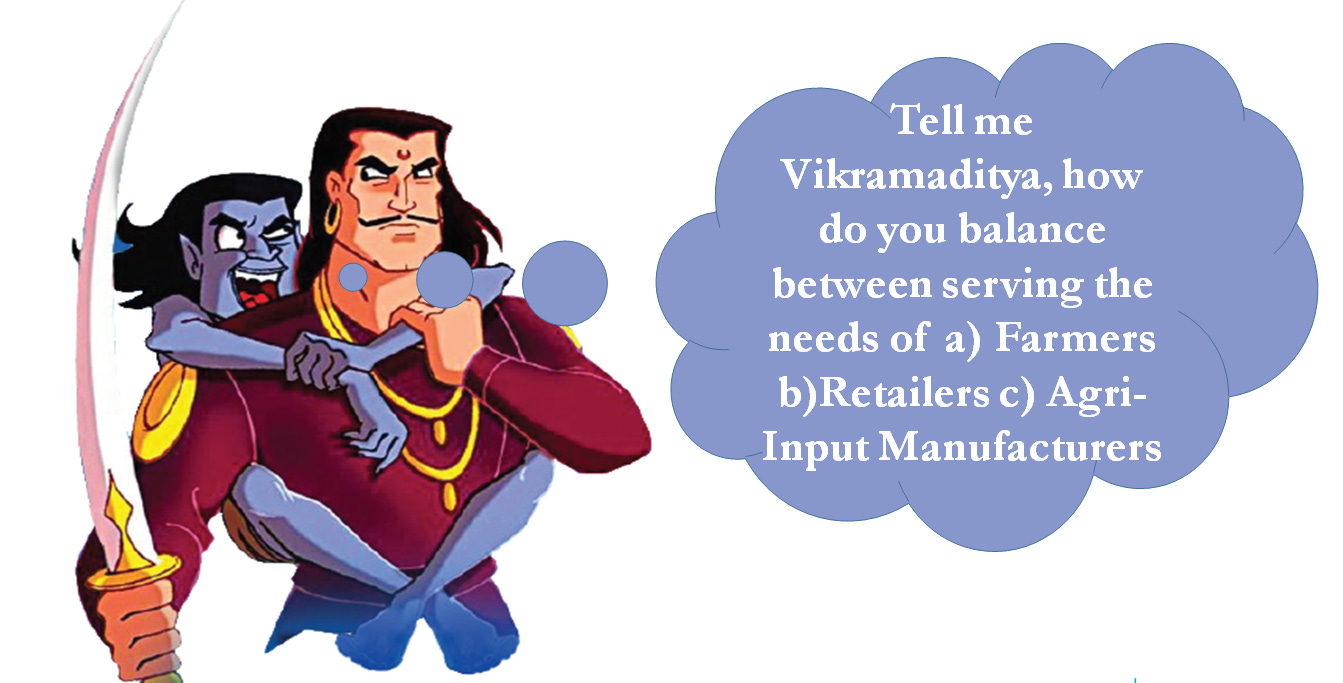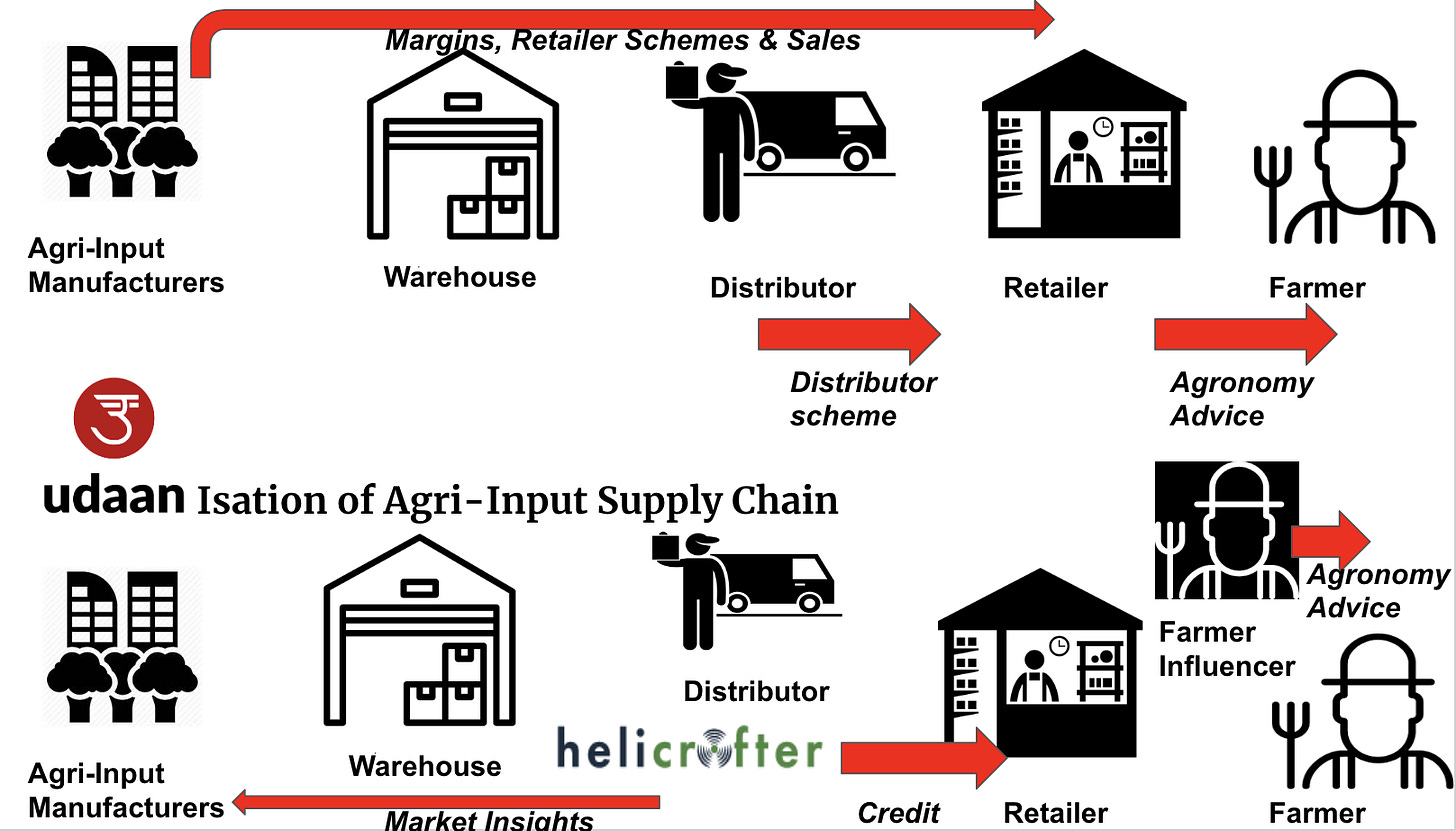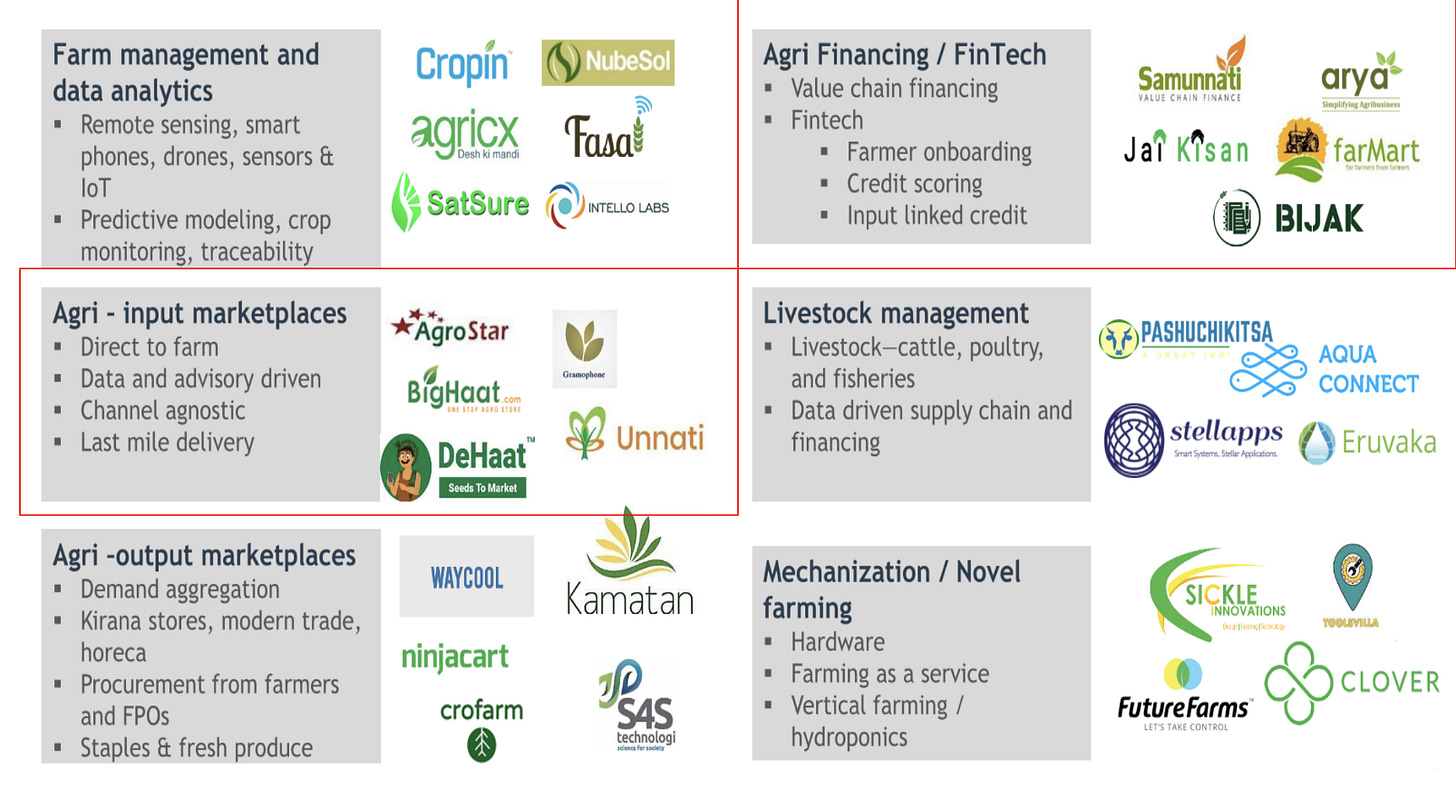Udaanisation of Agri-Input Supply Chain
Can a horizontal B2B e-commerce player teach something of value in agri-input e-commerce?
As a life-long student of Mahabharata, I am fascinated by the indic notion of Dharmasankata. The amazing interdisciplinary philosopher Gregory Bateson calls it "double bind". It is the central axis which sets the epic of Mahabharata leagues apart from Ramayana.
Ramayana was set in a time period when the society was moving from clans into more civilized societies. The moment Rama walked out of his "town", he immediately stepped into the forest.
However, when Krishna drove his chariot outside Hastinapura, during the times of Mahabharata, it must have been a long ride in his chariot to reach the forest. When you read how Indraprastha is described with mirror-like floors in Mahabharata, it is evident that we are talking about a different evolutionary phase in time, when the society had further evolved to have a more organized, city-like societal structure.
In Ramayana, the characters play as per their role propensities. Bharata simply plays out the proxy role and doesn't own up to his potential. However, in Mahabharata, the lead protagonists confront deep moral dilemmas to pursue a dharmic quest and discover their deepest heroic potential.
When Arjuna asks Krishna to take the chariot to the centre of the battlefield, facing both sides, he undertakes the same journey inward, confronting a deep dharmasankata, which eventually becomes the starting point for the Bhagavat Gita.
This was Arjuna's double-bind.
I am damned if I go ahead and fight this battle against those who raised me as a child.
I am damned, if I withdraw from the battle, as that would mean I go against the grain of my identity as a warrior and I would be ashamed forever.

Last December, when I visited IRMA campus to give a lecture in their Agri-Input Symposium, I had talked extensively with data elaborating the central Dharmasankata of Digital Agribusiness in the Agri-Input Supply Chain. Do read it, if you wish to go into the specifics.
If you want to take Digital Agribusiness seriously in context with Agri-Input Supply Chain, the best place to start is to work with the riddle posed by Betaal.

There are no easy answers to this riddle.
Over the last three years, in my extensive travels at work, every stakeholder who is invested in the future and potential of #Agritech is betting on technology to serve the needs of each of these three stakeholders, at the cost of the other.
And so this is the Digital Agribusiness Dharmasankata.
You can't serve the needs of all the three stakeholders. You have a choice to pick 2 out of 3. Whom will you pick?
How do you resolve this dharmasankata? Is it possible to design a new business model which can serve all the three stakeholders in the agri-input supply chain?
Over the past few months, I have been talking to Siddhartha Choudhary ever since he decided to move on from Destaglobal to build a new rural e-commerce company, Helicrofter.
During one of our conversations, he casually mentioned to me how Udaan has been an inspiration for him to redesign a new business model which serves all the three stakeholders in the Agri-Input Supply Chain.
I was quite surprised when I first heard about it.
Let's face it. It's almost impossible to build a horizontal B2B e-commerce model, given the byzantine regulations that regulate owning and trading agri-inputs. It got me thinking.
What would a horizontal B2B e-commerce player with a venture-funded estimated operating expense of 60 crores a month teach something of value in agri-input e-commerce?
Yesterday, I sat down with Siddhartha and did a long one-hour deep-dive to learn more about Siddhartha's journey and what lessons he learned from Udaan as he starts his next entrepreneurial journey with fire in the belly.
I didn't have the time and patience to edit the video.
If you are of the kind who loves to hear two people ramble for an hour about agri input retailing and the challenges involved in delivering agronomy advice and trading agri-inputs in the Indian market, please go ahead and watch this. You will get more insights than what I have summarized in this article.
Of course, we also talked about our lives, and what it means to be in the 99.99% percentile. (This is my first public video interview as an interviewer after a long time. Be kind.)
What makes Udaanisation of Agri-Input Supply Chain a likely contender to shape the future of agri-input retailing are two fundamental assumptions.
Assumption-1: Traditional Agri-Input Retailers matter in the long run, as unit-economics make it impossible to serve farmers in a vacuum and ignore the complex web of relations they are enmeshed in.
Assumption-2: You can't create any long-term impact in the future of agri-input commerce without addressing the credit needs of traditional agri-input retailers.
These two central assumptions are the fundamental axis levers, upon which Siddhartha is positing Helicrofter to be the next stage of evolution in agri-input e-commerce.
If you look closer, there is a contrarian truth that is underpinning the first assumption. Given the ground challenges in rural India, your unit economics will make it impossible to serve individual farmers.
(Do you want to challenge me on that? I am all ears). Helicrofter wants to serve Indian farmers by incorporating two critical entities into their value chain. a) Traditional Agri-Input Retailers and b) Farmer Influencers to trade and sell agri-inputs to farmers at the last mile.
Here is a quick and dirty summary of Udaanisation of Agri-Input Supply Chain. I have overly simplified for the sake of illustration.

What are the other critical assumptions that are being betted on?
There is a parallel agri-input credit ecosystem that is being built by brave agritech entrepreneurs who are betting on fintech models. And there are agri-input ecosystems that are emerging with a different set of assumptions.

Source: Rabo Foundation Report
How will Udaanisation affect the emerging agri-tech ecosystem at large? Which assumptions will be validated and invalidated by the market forces? I will explore more nuances and dynamics in the upcoming sections. Stay tuned.

